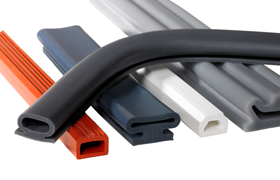Inflatable Seals and Gaskets
We Develop and Manufacture Custom Inflatable Seals and Gaskets for any Application
Why Choose Inflatable Seals and Gaskets
An inflatable seal is a type of rubber seal which inflates (rather than compresses) to create an air or watertight barrier. When compared to elastomeric compression seals, inflatable rubber seals are more forgiving of irregular or misaligned surfaces, which boosts sealing integrity.
They are also easier to use because they require less force to ensure a good seal – just move the mating parts into place and inflate the seal to close the gap. This makes them the perfect solution for unique and/or difficult sealing applications.
Find information on our inflatable seal standard profiles, construction, configurations, connectors, and more in our Minnesota Rubber and Plastics Design Guide.
Start designing your custom inflatable seal today.

Where Inflatable Seals and Gaskets are used
Our inflatable seals are being used today in environments where cleanliness and containment are paramount.
Have a sealing challenge?
Designing with Inflatable Seals
A successful inflatable seal design must take into account the environment it is used in, what it is sealing out (in), along with the operating pressures required to create an effective seal. Once this information is obtained, a good design must address:
- the seal configuration (i.e. where the seal will be installed, how it will inflate, and the overall size of the seal itself)
- the profile required in order to effectively seal the gap
- use of the right material for the application, including the addition of fabric reinforcement when necessary
- selection of the right air connector
For more information regarding proper seal designs, please review our “Designing with Inflatable Seals” guide or jump into our Technical Information section for further details.
Design Engineers: Read our Design Guide
We wrote this for design engineers because you don’t have time to become a rubber or plastics expert. That’s our job.
To gain a better understanding of the processes, materials and technical considerations involved in the design and manufacture of custom-molded rubber, read through our Engineer Design Guide. This comprehensive design tool details both rubber and plastic design issues including a materials overview and prototype mold design considerations.
